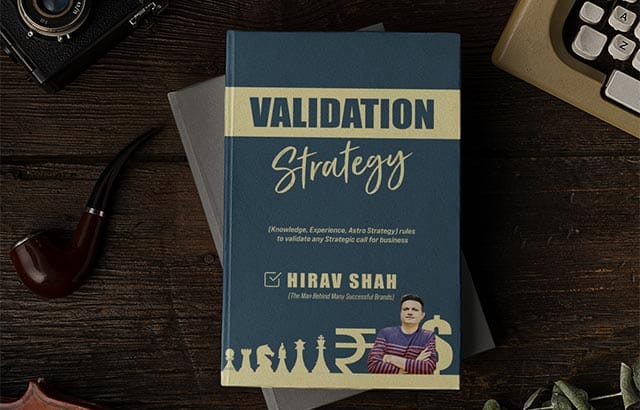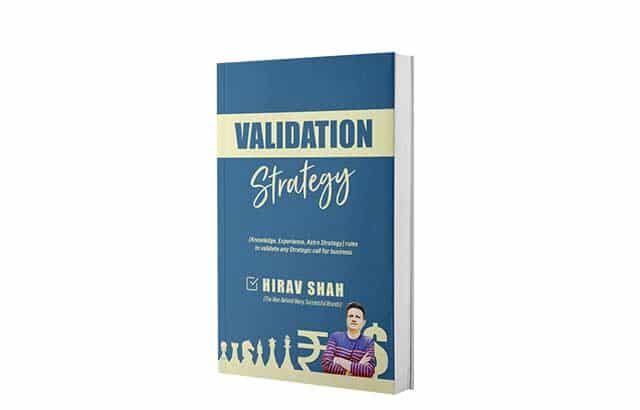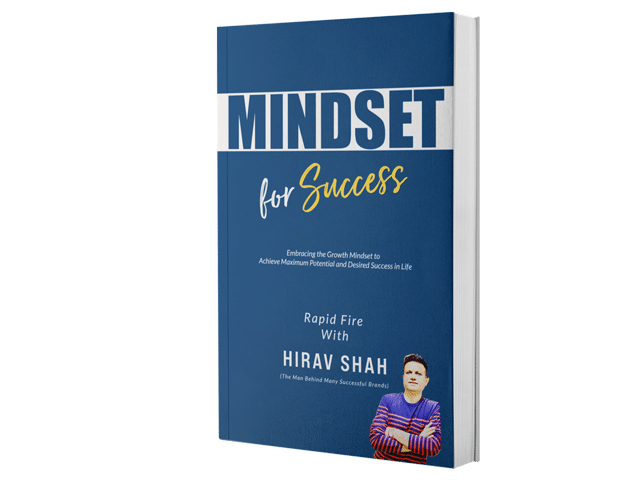In today’s fast-paced and competitive business landscape, it’s not enough to simply create a product or service and hope for the best. To stand out, you need a well-thought-out validation strategy—a process that ensures your product resonates with your target audience and meets their real needs. This article dives into how you can develop a winning validation strategy for your business, with tips from Hirav Shah, a renowned business strategist and The Game Changer in the industry.
Table of Contents
The Importance of a Validation Strategy
Having a solid validation strategy is crucial for your business’s success. Here’s why:
- Identifying Market Demand:
A well-executed validation strategy helps you assess whether there’s actual demand for your product or service. By conducting thorough market research and testing your assumptions, you can ensure your business idea is worth pursuing.Example:
Before launching, the founders of Airbnb used a simple website to validate the concept of renting out air mattresses in their apartment. The feedback they received helped them refine their business model and eventually build a global platform. - Refining Your Offering:
Once you’ve validated your idea, it’s essential to test it further with real users. Gathering feedback from your target audience allows you to refine your product or service to better meet their needs, saving time and resources in the long run.Example:
Dropbox successfully validated its product by creating a basic explainer video, which they shared online. The overwhelming response validated the market demand for their cloud storage solution, allowing them to secure funding and build a successful product. - Mitigating Risks:
By gathering data and feedback early, you can spot potential risks and challenges before they escalate. Validation helps you make informed decisions, reducing uncertainty and ensuring your business stays on the right track.
Key Components of a Validation Strategy
A winning validation strategy involves several essential components. Let’s break them down:
1. Market Research
Understanding your target audience is the first step in any validation strategy. By conducting surveys, interviews, and analyzing market trends, you gain insights into your customers’ preferences and pain points. This data helps shape your product or service to meet their needs.
Example:
A business strategist like Hirav Shah might recommend focusing on buyer personas—fictional representations of your ideal customers. These personas help you visualize your customer base and address their challenges effectively.
2. The Validation Process
Once you have a rough idea of what your product will look like, test it with real users through methods such as user interviews, prototypes, or beta tests. The goal is to gather feedback and make necessary adjustments before the full launch.
Example:
Companies often use tools like Google Analytics to track user behavior on their website, providing valuable insights into how your audience interacts with your product.
3. Data Analysis
After gathering data from the validation process, it’s time to analyze and interpret it. Whether you’re working with quantitative (survey responses, website analytics) or qualitative (user interviews, observations) data, identifying trends and patterns is key to refining your offering.
Example:
By using A/B testing, you can test different product versions to see which one performs best, helping you make informed decisions based on real user preferences.
Common Challenges in Validation Strategy
Even with the best intentions, validating your business idea can come with challenges. Here are some common pitfalls to avoid:
Confirmation Bias:
Be cautious about only seeking feedback that aligns with your assumptions. To avoid confirmation bias, actively seek out diverse perspectives.
Example:
When testing a new feature for an app, don’t just ask loyal customers—include some who haven’t used the app before to gain fresh insights.
Resource Limitations:
Validation often requires a significant investment of time, money, and manpower. Allocating resources wisely can help you avoid burnout while still gathering valuable insights.
Tip:
Focus on the most critical aspects of your offering first, then gradually expand testing as you receive more feedback.
Fear of Failure:
Validation involves exposing potential flaws in your product, which can be intimidating. Embrace failure as part of the learning process—each setback is an opportunity to improve.
Example:
Hirav Shah emphasizes that “failure isn’t final; it’s a stepping stone to growth.” By treating failure as an opportunity for improvement, you can create a better product that addresses real market needs.
How to Identify Your Target Audience
Identifying your target customers and understanding their needs is the first step in developing a solid validation strategy.
- Buyer Personas:
Create detailed buyer personas based on market research. These should include demographic information, motivations, pain points, and purchasing habits. - Surveys and Interviews:
Surveys provide quantitative data (e.g., age, income), while interviews offer qualitative insights into customers’ thoughts and feelings.Example:
A company might survey 100 potential customers to gauge interest in a new feature. Follow-up interviews with a smaller group can help gather more in-depth feedback.
Analyzing and Interpreting Validation Data
Once you’ve gathered data, it’s time to interpret it. Here’s how:
- Quantitative Data:
For metrics like website traffic or survey responses, use statistical analysis to identify trends. This will give you a clear picture of your audience’s preferences. - Qualitative Data:
Analyze open-ended responses through content analysis, identifying common themes or patterns.Example:
If a significant number of users mention they’re confused about a product’s feature, it indicates that improvement is needed.
Tools and Resources for Implementing a Validation Strategy
There are several tools available to help you with the validation process:
- Google Analytics:
Provides insights into website traffic, user behavior, and conversion rates. - A/B Testing Platforms:
Tools like Optimizely allow you to test different variations of your product or website and measure which one performs best. - Customer Feedback Tools:
Use platforms like SurveyMonkey or Typeform to collect customer opinions and feedback. - Books and Courses:
Learn more about effective validation strategies through books like The Lean Startup by Eric Ries or online courses on platforms like Coursera and Udemy.
Adjusting and Refining Your Validation Strategy
Validation is an iterative process—the key is to stay flexible and refine your strategy as you learn more. Here’s how:
- Retrospectives:
Reflect on each validation round to identify what worked and what didn’t. This helps you refine your approach for future iterations. - Involving Stakeholders:
Include your team, customers, or even industry experts in the process to get valuable feedback from different perspectives. - Staying Agile:
The market is constantly changing. Stay open to new ideas and adapt your validation strategy to keep up with evolving customer needs.
Common Pitfalls in Validation
- Over-validation:
It’s easy to get stuck in a loop of validation. Eventually, you have to make decisions and take calculated risks. - Self-validation:
Relying only on your own opinion can be risky. Always seek external feedback from real users and potential customers.
Conclusion: Validation Equals Success
In today’s competitive environment, a strong validation strategy is a game-changer for your business. By focusing on market research, testing your ideas, and analyzing feedback, you can refine your offering to better meet your customers’ needs. Incorporating strategies from industry experts like Hirav Shah can further enhance your approach. By staying agile, embracing failure, and continuously refining your strategy, you increase your chances of building a business that stands the test of time.
FAQs
- How do I get started with validating my product?
Start by conducting market research to understand your audience’s needs. Create buyer personas and test your ideas through prototypes or surveys. - How do I avoid confirmation bias in validation?
Seek feedback from a diverse group of people, even those who may not agree with your ideas, to ensure you’re getting a broad range of perspectives. - How much time should I spend on validation?
Validation is an ongoing process. However, it’s important to strike a balance—validate enough to make informed decisions but don’t get stuck in endless rounds of testing.
By following these strategies, you’ll be on your way to building a product that not only meets market needs but stands out in a crowded market.



















